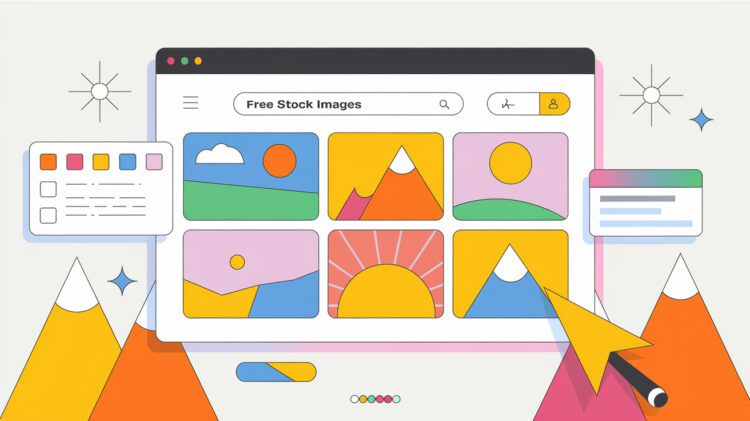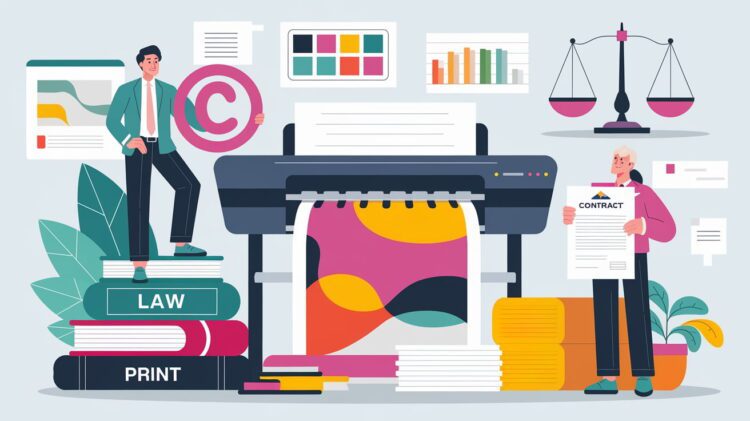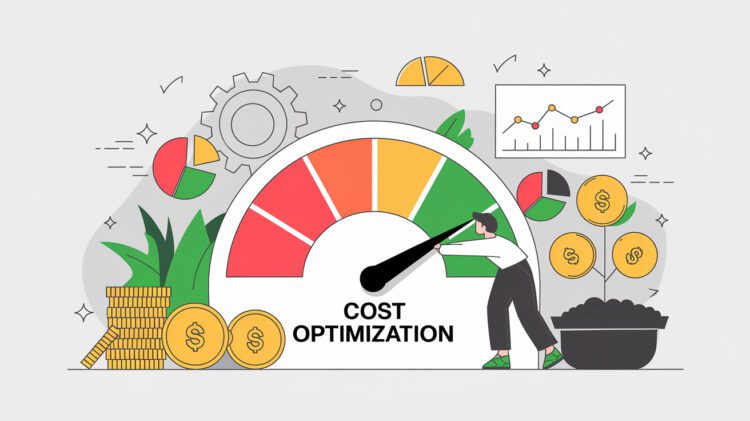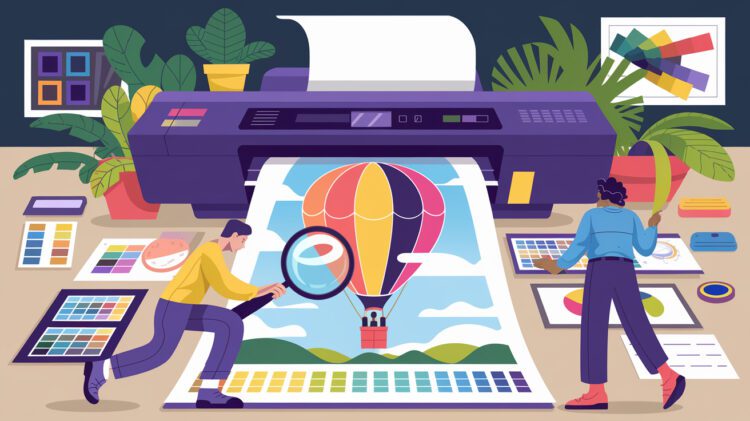Looking to create eye-catching designs without spending a fortune? Free stock images for print materials are your secret weapon! Whether you’re designing brochures, posters, or business cards, using the right images can take your print materials from average to amazing. But professional photography can cost a pretty penny, and not everyone has the budget for that. That’s where free stock images come in to save the day!
If you’re like me and want to create eye-catching, professional-looking print materials without breaking the bank, free stock images for print materials are the way to go. In this article, I’ll guide you through 9 essential tips on how to use free stock images for print materials to make sure your print materials stand out while keeping costs low.
1. Why Image Resolution Matters for Print
This might sound super technical, but trust me, it’s crucial. The biggest difference between images you use online and those for print comes down to resolution, specifically DPI (dots per inch). For online use, you can get away with low-res images, but print is much less forgiving. If the image you’re using isn’t high-resolution, it’ll end up looking pixelated or blurry in print—and nobody wants that!
For free stock images for print materials, always aim for images with at least 300 DPI to ensure they look sharp and professional. This is especially important for high-resolution stock images for print where clarity is critical. Anything lower, and you risk making your designs look unprofessional.
Pro Tip: Before downloading any image, always check its resolution. Most stock image sites provide a variety of resolutions—go for the highest one that fits your needs!
2. Best Websites for Free Stock Images for Print Materials

Not all free stock images are created equal, especially when it comes to print. Lucky for us, there are some fantastic free stock sites out there offering high-quality, print-ready images. Here are my top picks:
- Unsplash: Known for its breathtaking high-resolution images, Unsplash is a go-to for all kinds of creative projects.
- Pexels: With a wide variety of commercial-use images, Pexels offers great options for print.
- Pixabay: Looking for images, vectors, and even illustrations? Pixabay has it all, and they’re great for print too.
- Burst (by Shopify): Created with business users in mind, Burst is perfect for marketing-related print materials.
- Kaboompics: Not only does Kaboompics offer stunning high-res images, but it also provides color palettes to keep your designs cohesive.
Each of these platforms offers plenty of high-resolution, free images that are perfect for making your print materials pop, especially when you need free commercial-use images for print advertising. You can also check out some of the best websites for free stock images to find even more great options.
3. Ensuring Proper Licensing for Print Usage

So, you’ve found the perfect image. Now, what? Before you hit “print,” you need to make sure you’re not violating any copyright laws. Just because an image is free doesn’t mean you can use it however you like.
Here’s the lowdown on licenses:
- CC0 License (Creative Commons Zero): This is the holy grail. It means you can use, modify, and print the image however you want—without giving credit. Perfect for print materials.
- Attribution License: Some images require you to give credit to the photographer or creator. If you’re using the image for a business, make sure you include a credit line somewhere in your design, like “Photo by [Photographer’s Name].”
- Commercial Use: Always double-check that the image is licensed for commercial use. This is especially important if your print materials are for marketing purposes. Using a non-commercial image in a commercial context can get you in trouble.
Licensing terms vary, so when in doubt, stick to CC0 or other commercial-use images to avoid any issues later on. By doing so, you ensure that your free stock images for print materials are used properly and legally, giving you peace of mind in both personal and commercial projects. For a deeper dive into how to navigate licensing, check out this guide on Understanding Stock Image Licensing Types for Free Stock Images for Print Materials.
4. Common Mistakes to Avoid When Using Free Stock Images for Print

We’ve all made mistakes when designing, but avoiding a few key pitfalls can take your print materials from “meh” to “wow!” Here’s what to watch out for:
- Mistake 1: Using low-resolution images
It might look fine on your screen, but once printed, that low-res image will look pixelated and unprofessional. Stick to 300 DPI or higher. - Mistake 2: Ignoring color profiles
Your monitor displays images in RGB (Red, Green, Blue), but print uses CMYK (Cyan, Magenta, Yellow, Key/Black). Make sure to convert your images to CMYK before printing to avoid any weird color shifts. - Mistake 3: Over-editing your images
You’ve got an amazing image, but after cranking up the filters, it starts looking unnatural or grainy. A little goes a long way—keep your edits subtle. - Mistake 4: Using the wrong file format
JPEGs are fine for web, but for print? Not so much. Use TIFF or PNG formats to preserve quality.
By avoiding common pitfalls like low-resolution images, incorrect color profiles, and over-editing, you can ensure that your free stock images for print materials look professional and sharp in any printed format.
5. Best Practices for Editing Free Stock Images for Print Materials
Editing images for print can be tricky, but following these best practices will ensure your images are crisp and professional.
- Resizing without losing quality: Use tools like Photoshop, GIMP, or Canva to resize images properly. Don’t just stretch an image to fit a layout—it’ll look distorted. Instead, crop the image while maintaining its aspect ratio.
- Color adjustments: Colors can sometimes look dull in print. Adjust the contrast and brightness slightly to make the image pop on paper. If your image feels flat, a little color correction can go a long way.
- File formats: For printing free stock images for print materials, you should always save your images in TIFF or PNG format. These formats are ideal for images for print projects as they retain image quality and don’t compress the file like JPEGs, so you won’t lose any sharpness or detail.
- Converting to CMYK: When editing, don’t forget to switch the color mode from RGB to CMYK, especially for professional print jobs. This ensures that the colors on your screen match what gets printed.
6. Creative Uses of Stock Images in Print Marketing
Let’s get those creative juices flowing! Stock images aren’t just for filling space—they can take your marketing materials to the next level. Here are some creative ways to use free stock images in print:
- Business Cards: Instead of plain backgrounds, why not use a high-quality image that reflects your brand? A subtle, sleek image can make a strong first impression.
- Brochures: Make the cover of your brochure pop with a full-page, vibrant stock image. Inside, sprinkle in smaller images to keep things interesting without overwhelming the content.
- Posters: Free stock images can also be enlarged for posters. A stunning high-res image at the center of your poster will grab attention in any space.
- Flyers: Use free stock images as background visuals or to highlight key points in your flyer. It’s an easy way to make your message stand out.
Mixing stock images with custom text and design elements can turn a basic print material into something eye-catching and memorable.
7. Balancing Cost and Quality with Free Stock Images

The beauty of free stock images is that they allow you to keep your costs low without compromising quality. Whether you’re a startup, a small business, or a solo entrepreneur, free stock images can save you hundreds—if not thousands—on photography and design costs.
Here’s how to get the best of both worlds:
- Stick to high-quality sites: Websites like Unsplash, Pexels, and Burst are known for offering professional-level images for free.
- Don’t overuse filters: You want your images to look professional, not like they’ve gone through a dozen Instagram filters. Simple edits go a long way in maintaining a polished look.
- Use images strategically: Not every section of your brochure or flyer needs an image. Select key areas where visuals can help communicate your message and keep other sections clean and minimalistic.
By strategically using high-resolution images and carefully editing them, you can create print materials that look like they were designed by a pro—all while staying within your budget.
8. Designing Cohesive Print Materials with Free Stock Images for Print Materials
You don’t want your brochure to look one way and your business card to look like it’s from a different planet, right? Consistency is key. But how do you maintain that cohesive feel across all your print materials when you’re pulling images from different sources? It’s easier than you think.
Here’s what to do:
- Stick to a theme: Choose stock images with similar lighting, colors, or styles. For example, if you’re going for a minimalist look, avoid throwing in a vibrant, neon-colored image—it’ll disrupt the flow.
- Use color palettes: Sites like Kaboompics offer color palette data, which helps in choosing images that fit within the same color scheme. This ensures your materials look cohesive across the board, from posters to business cards.
- Maintain brand consistency: Your images should reflect your brand’s identity. Whether your brand is playful and fun or sleek and professional, select images that align with your overall tone and message.
By keeping a consistent aesthetic, your print materials will feel like they’re all part of the same family—polished, professional, and on-brand.
9. Test Print Before the Final Run

One often-overlooked tip: always do a test print! You don’t want to order 500 brochures only to realize the images came out grainy, the colors are off, or the alignment is just slightly skewed. A test print gives you the chance to catch these issues before you commit to a large batch.
Why test prints matter:
- Color accuracy: What looks great on your computer screen might look different when printed. The colors on screen are in RGB, but your printer uses CMYK. A test print will let you see how the colors really look on paper and give you a chance to tweak them if necessary.
- Image clarity: A test print helps ensure your images are as sharp in print as they appeared on your screen. Sometimes, even high-resolution images might lose clarity when scaled or edited. Better to catch this with one test copy than a bulk order.
- Alignment and layout: Print previews don’t always capture how things will line up in the physical world. A test print will help you spot any alignment issues or design elements that need adjustment.
Always do a quick test print to make sure your design, colors, and images come out exactly as planned. It’s a small step that can save a lot of headaches (and money) in the long run! By doing this, you can ensure that your free stock images for print materials look perfect in the final product and avoid any costly surprises.
Free stock images for print materials are a fantastic resource for creating professional, eye-catching designs without a hefty price tag. By following these 9 essential tips, you can ensure that the images you choose not only look great but also enhance your printed designs. From understanding resolution and licensing to editing techniques and maintaining consistency, the right stock image can make your print materials stand out.
And remember—don’t rush into bulk printing! Test, adjust, and perfect your design before hitting the final print button. With a little care and attention, your print projects can look polished, professional, and totally budget-friendly. So, get out there and start designing your next stunning brochure, flyer, or business card using the power of free stock images for print materials!
